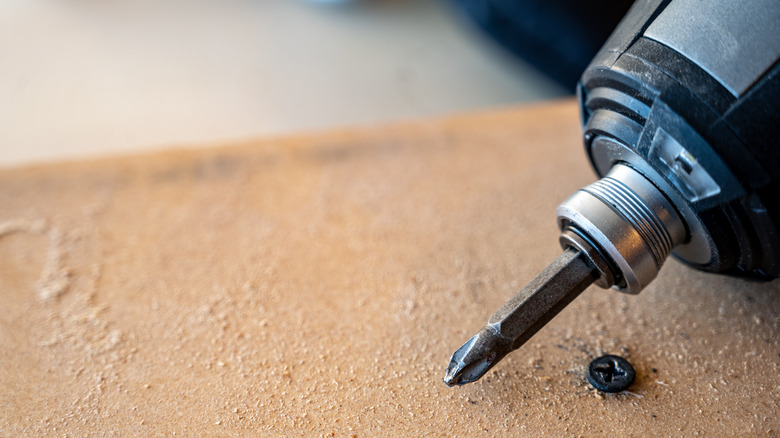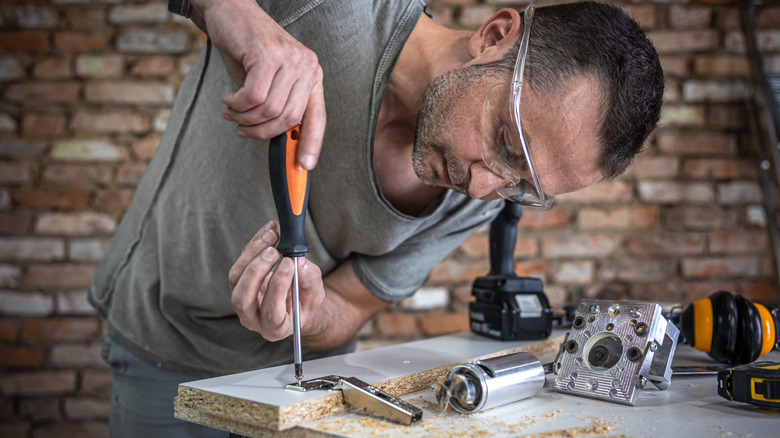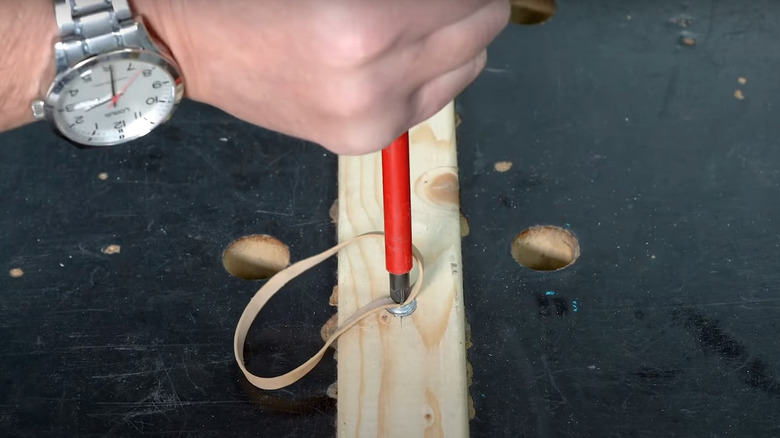Here's Why You Keep Stripping Your Screws
It can be frustrating to accidentally strip screws when you're in the midst of a DIY project at home. It can also slow you down by quite a bit. While even the most experienced DIYers strip a screw now and then, you should take note if it seems to be happening a lot. If you're stripping screws often, it's time to take steps to prevent the problem. You should also know how to remove a stripped screw, in case you do experience issues.
You may be stripping screws because you're using cheap screws or low quality tools or because you're not using the right screwdriver or drill bit size. You might also be using your screwdriver at an angle, working too fast, or over-tightening the screws. To prevent problems, you'll need to be aware of these potential issues and approach your work with care. Avoiding stripping screws requires a bit of awareness and know-how but it's not too difficult once you know a few tricks and tips.
How to stop stripping screws
To stop stripping screws, ensure you're buying high quality screws rather than cheap alternatives. Regardless of the screw material you use, opt for premium screws that have been made with quality in mind. Ensure that your screws are suitable for their application and always choose the right screw for your DIY project.
In addition to this, ensure that you're using a drill and screwdriver correctly. Use your screws straight on and avoid using a screwdriver or drill at an angle. Also, always use the right type of screwdriver or drill for the type of screw that you're using whether that's a Phillips head screw, flathead screw, or another option. Always take the time to drill perfect pilot holes to ensure your screws go in easily and there will be a low chance of stripping. You should also ensure you're not using worn out drill bits. When using a drill, remember to go slow at first. Only speed up once you're sure that the screw is going in smoothly.
Successfully removing stripped screws
In most cases, removing stripped screws won't be difficult and there are a few ways to handle it. One of the best ways to remove a stripped screw is to pull it out with pliers. Some pliers are even made especially for this purpose. Using pliers will be particularly easy if the screw is still sticking out a bit. You'll simply need to grab your pliers, clamp down on the screw, and twist counterclockwise. This should allow you to move the screw easily without causing any damage. If the screw is further in and aligned with the surface, the process may be a bit more difficult. In this case, the best solution is to cut away a bit of the surrounding wood with a utility knife first to ensure there's enough room to grab the top of the screw with your pliers.
A great hack for dealing with difficult-to-remove stripped screws is to use a rubber band. Place the rubber band on top of the screw and then use a screwdriver to turn it counterclockwise. The rubber should help provide additional grip and traction to the stripped screw and make it easier to remove. Another option for removing a stripped screw is to create a new slot in the screw. A rotary cutting tool can help you create a new slot on the top of the screw. You can then use a flathead screwdriver to twist the screw out of place. Follow these steps and you're stripped screw problems will be solved.


